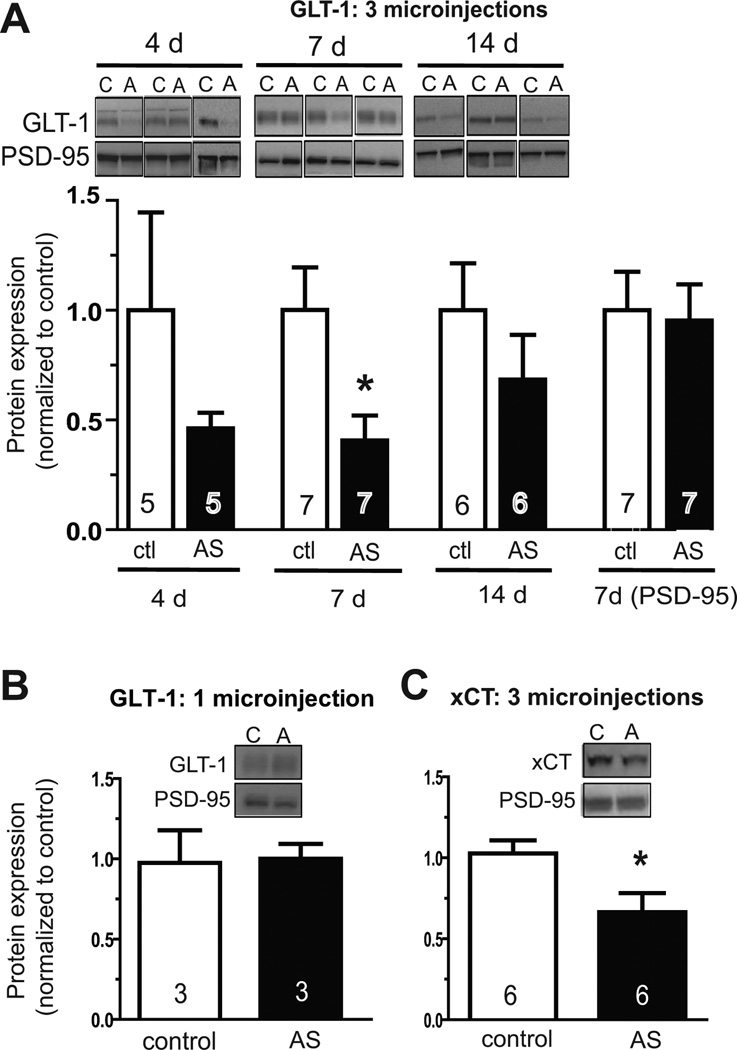Fig. 1.
Knockdown of GLT-1 and xCT in rat NAc with antisense vivo-morpholinos. Antisense (AS) or reverse control (ctl) sequence vivo-morpholinos against the indicated target were microinjected into contralateral hemispheres once per day for three days, and expression was assessed by Western blotting in a membrane subfraction at the indicated number of days following the last microinjection. Expression of xCT and GLT-1 was normalized to expression for PSD-95 loading control, and within animal comparisons were made between control and AS treatment for each animal. For representative blots, C, control; A, antisense.(A) Expression of GLT-1 is decreased at 4 days post-injection, and is significantly suppressed seven days post-microinjection. Levels of GLT-1 are not significantly different between AS and control treatments at fourteen days post-microinjection. Two-way ANOVA revealed a significant effect of treatment, F(1,34)=7.027, p<0.05. Because within animal comparison was used for each animal, a paired t-test was used for direct comparison at each time point. (B) One microinjection of GLT-1 AS vivo-morpholinos is insufficient to suppress expression seven days later. (C) Three microinjections of xCT AS vivo-morpholinos leads to significant suppression of expression seven days later, as compared by Western blot to reverse control-treated hemisphere.

